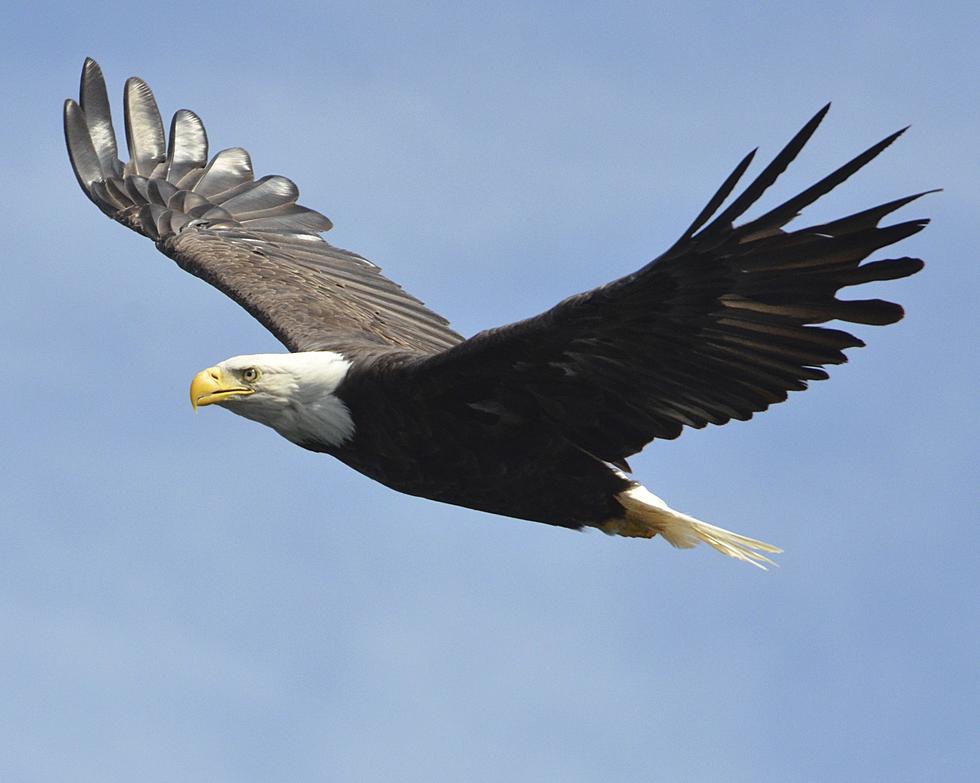
Bald eagles in New Jersey have a new threat
🔵 Since DDT poisoning, NJ's bald eagle population has rebounded over the years
🔵There are about 280 nesting pairs across all 21 counties of the Garden State
🔵But now there is a new threat that could potentially harm their numbers
The bald eagle population in New Jersey has made a remarkable comeback over the past couple of decades, but that wasn’t always the case.
DDT Poisoning
The bald eagle population in New Jersey had gone down to one single nesting pair in the 1970s, said Kathleen Clark, a biologist in the state’s Endangered and Nongame Species Program with the NJ Fish and Wildlife.
There was a steady decline for as long as DDT pesticide poisoning was in active use from the 1940s through 1973, she said. But DDT is long-lived in the ecosystem. It’s still out there today. She said remnants of DDT have been found recently when eagle blood has been tested.
DDT pesticide poisoning caused eggshell thinning. That meant eggs would not hatch, which led to almost a zero population. The good news is that DDT is mostly out of the ecosystem and no longer the threat that it was, Clark said.
Bald Eagle Population Today
The bald eagle population has increased in New Jersey since 1982 when a second nest was discovered. Clark said there has been a 5% growth rate each year. Last year, 280 nesting pairs were found throughout the state. This year will be roughly the same, she said.
Clark credits the increasing numbers to great habitats. Bald eagles are looking for healthy waterways, cleaner water, and an abundant fish population. But they still need to have large trees that are in undisturbed areas to nest successfully, she added.
About 50% of New Jersey’s bald eagle population can be found in the Delaware Bay counties of Salem, Cumberland, and Cape May. They nest at a higher density where there’s a lot of habitat, tidal river, woodland, and farmland habitats.
But they are nesting in all 21 counties. Clark said she’s seen them occupying empty habitats near the Passaic and Hackensack Rivers.
New Threat
While DDT was once the main threat to bald eagles, there is now a new threat that has biologists worried. Lead poisoning from bullet fragments.
A 2022 Cornell University study found deaths arising from the ingestion of lead ammunition were associated with between a 4% and a 6% reduction in the growth rate of female and male bald eagles.
Clark said fragments from hunters’ lead bullets can be found throughout a dead animal they killed. Typically, hunters take the parts of the animal they want but leave the rest of the carcass in the woods or field. She said when an eagle feasts on the animal, they can potentially ingest the lead.
“It takes very little lead to disable an eagle and even kill it. Eventually, we want to eventually go to non-lead ammunition. There are some places in the U.S. where that is being done experimentally. If that could be done in the eastern U.S., it would result in many fewer deaths of bald eagles and golden eagles,” Clark said.
Lead is a neurotoxin that goes straight to the brain. It has very terrible effects on eagles and raptors, she said. Bald eagles are very susceptible to lead because their stomachs are highly acidic and bullet fragments tend to break down quickly.
What can be done?
There are some major hunting coalitions out there that are all about replacing lead ammunition with non-lead. That replacement has already been done with waterfowl hunting, Clark said. Lead cannot be used for waterfowl hunting.
Hunters using lead bullets to kill a deer or another animal are encouraged to take the parts of the animal they want. But instead of leaving the rest of the carcass in the field to potentially harm our birds, they are being encouraged to bury the rest of the carcass. If it’s out of sight, eagles, raptors, and other birds of prey won’t be exposed to the lead.
Report a correction 👈 | 👉 Contact our newsroom
Top 20 largest cities in New Jersey
Gallery Credit: New Jersey 101.5


